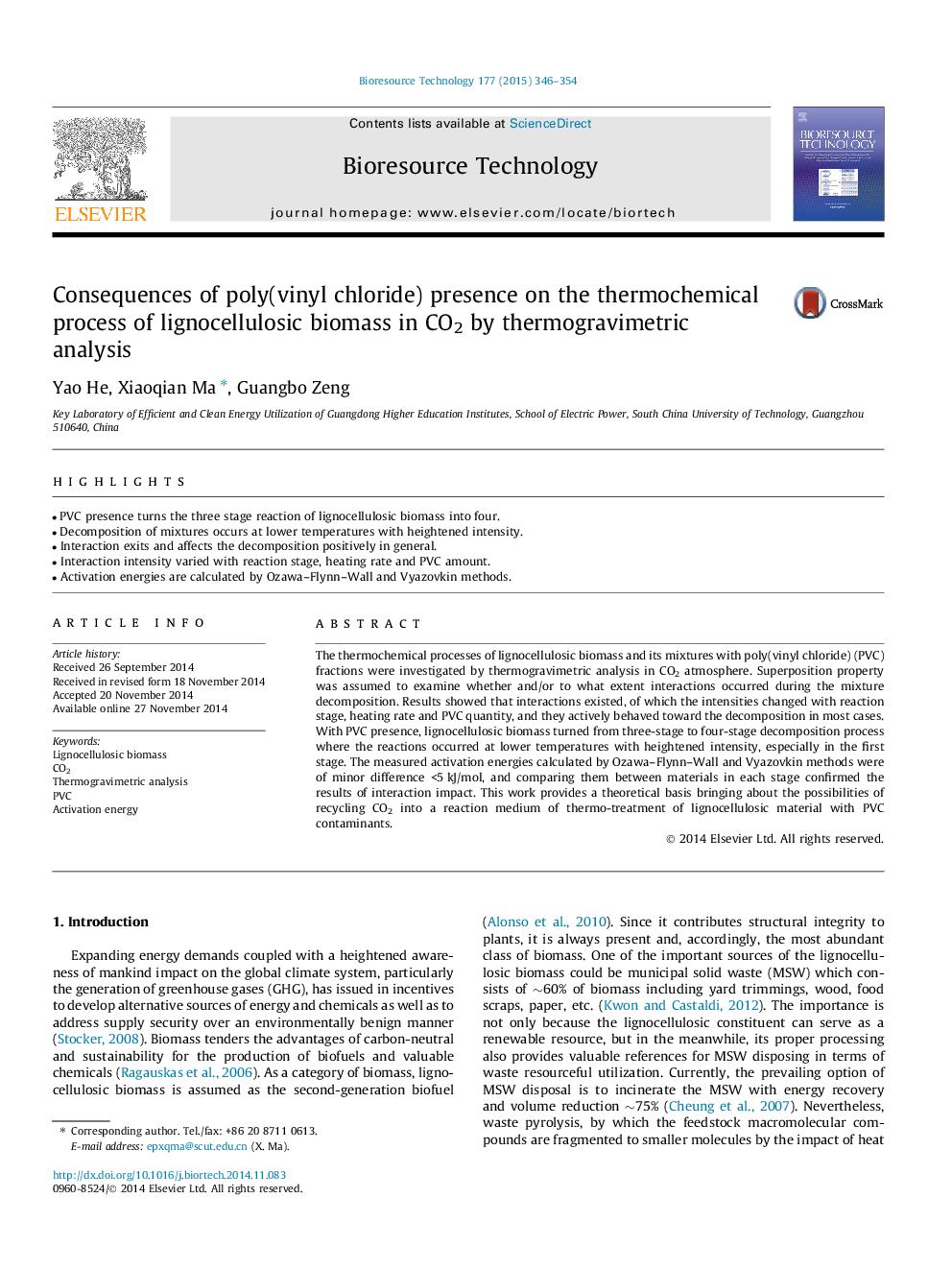| Article ID | Journal | Published Year | Pages | File Type |
|---|---|---|---|---|
| 680245 | Bioresource Technology | 2015 | 9 Pages |
•PVC presence turns the three stage reaction of lignocellulosic biomass into four.•Decomposition of mixtures occurs at lower temperatures with heightened intensity.•Interaction exits and affects the decomposition positively in general.•Interaction intensity varied with reaction stage, heating rate and PVC amount.•Activation energies are calculated by Ozawa–Flynn–Wall and Vyazovkin methods.
The thermochemical processes of lignocellulosic biomass and its mixtures with poly(vinyl chloride) (PVC) fractions were investigated by thermogravimetric analysis in CO2 atmosphere. Superposition property was assumed to examine whether and/or to what extent interactions occurred during the mixture decomposition. Results showed that interactions existed, of which the intensities changed with reaction stage, heating rate and PVC quantity, and they actively behaved toward the decomposition in most cases. With PVC presence, lignocellulosic biomass turned from three-stage to four-stage decomposition process where the reactions occurred at lower temperatures with heightened intensity, especially in the first stage. The measured activation energies calculated by Ozawa–Flynn–Wall and Vyazovkin methods were of minor difference <5 kJ/mol, and comparing them between materials in each stage confirmed the results of interaction impact. This work provides a theoretical basis bringing about the possibilities of recycling CO2 into a reaction medium of thermo-treatment of lignocellulosic material with PVC contaminants.
